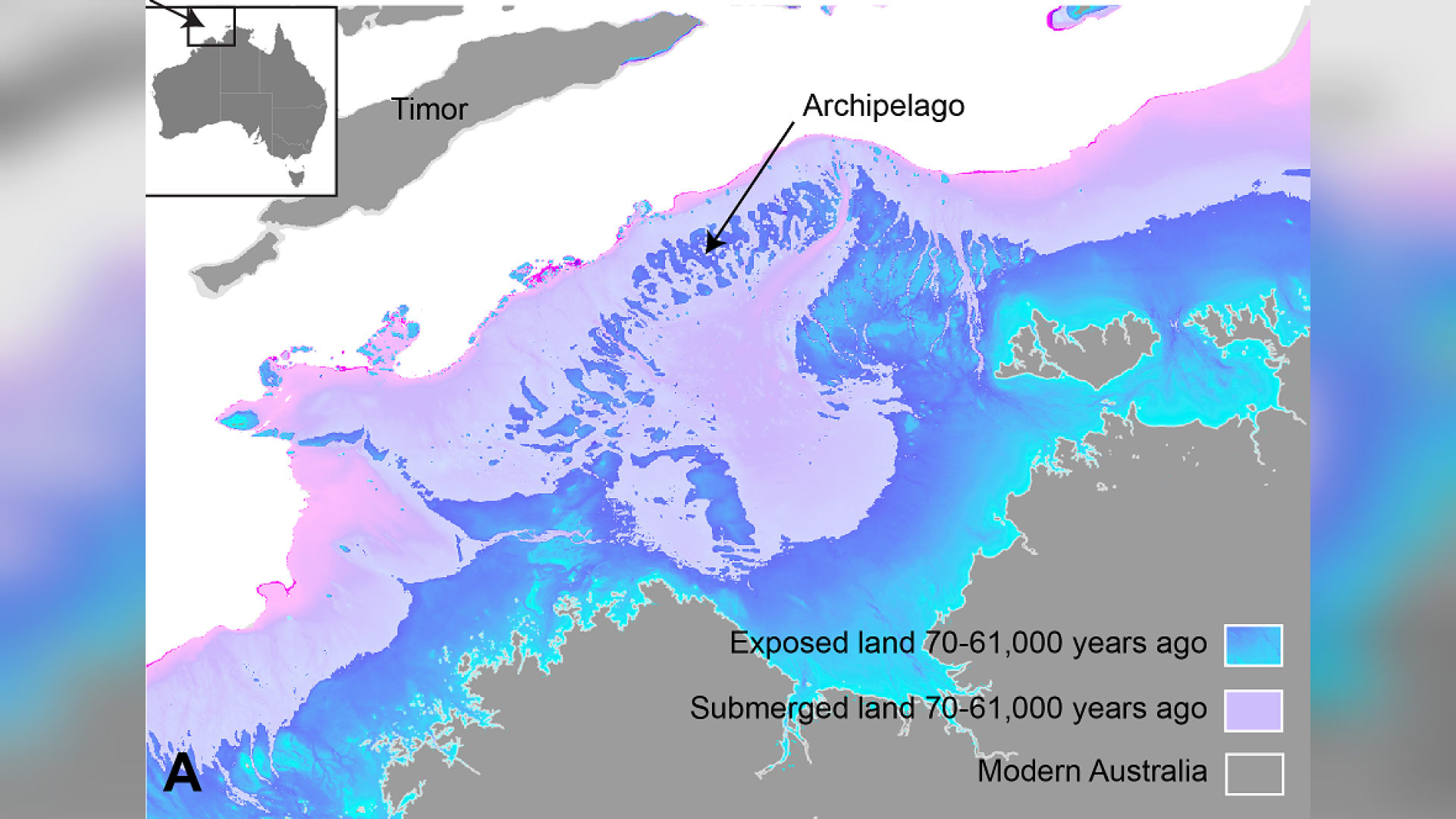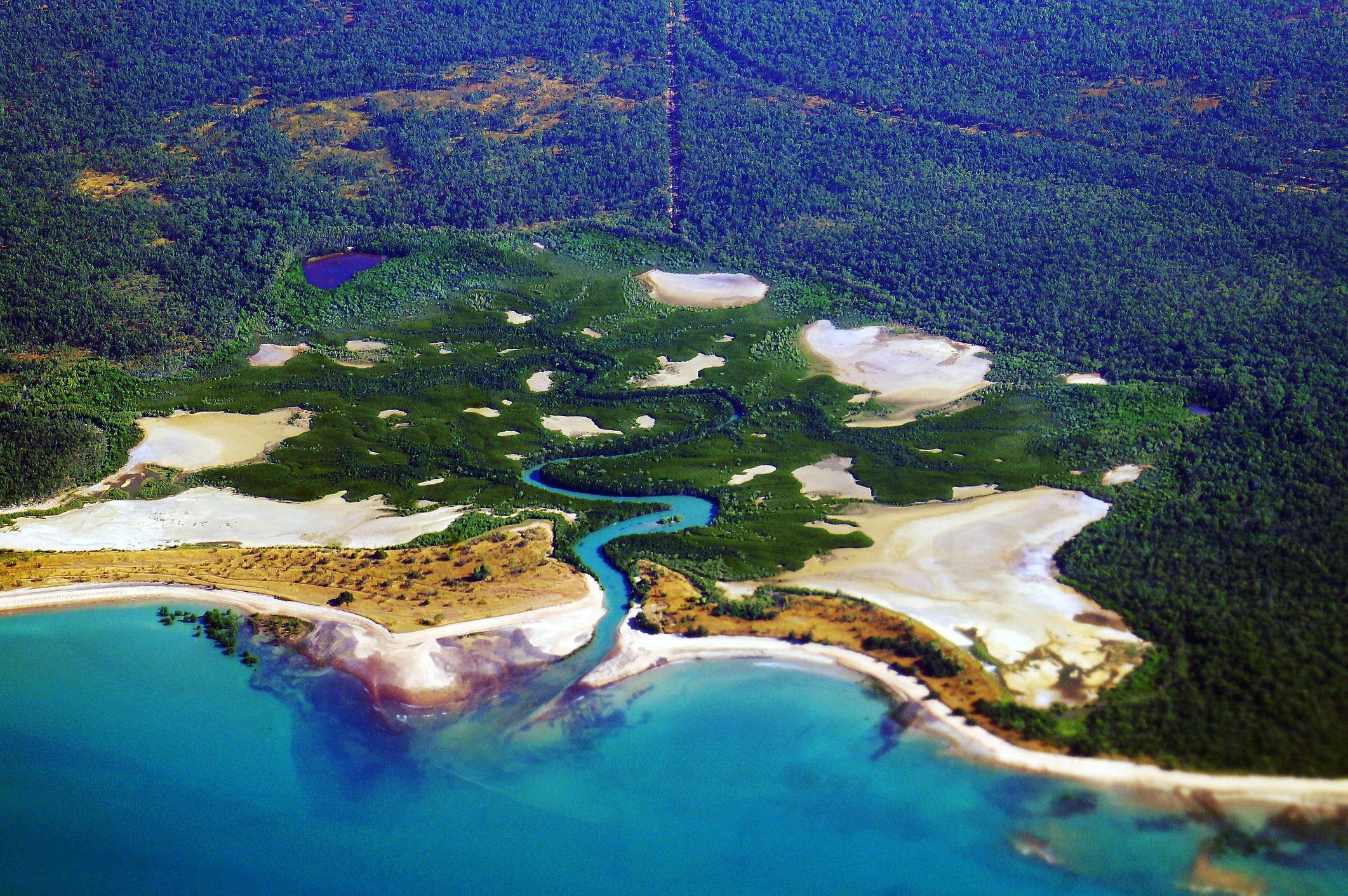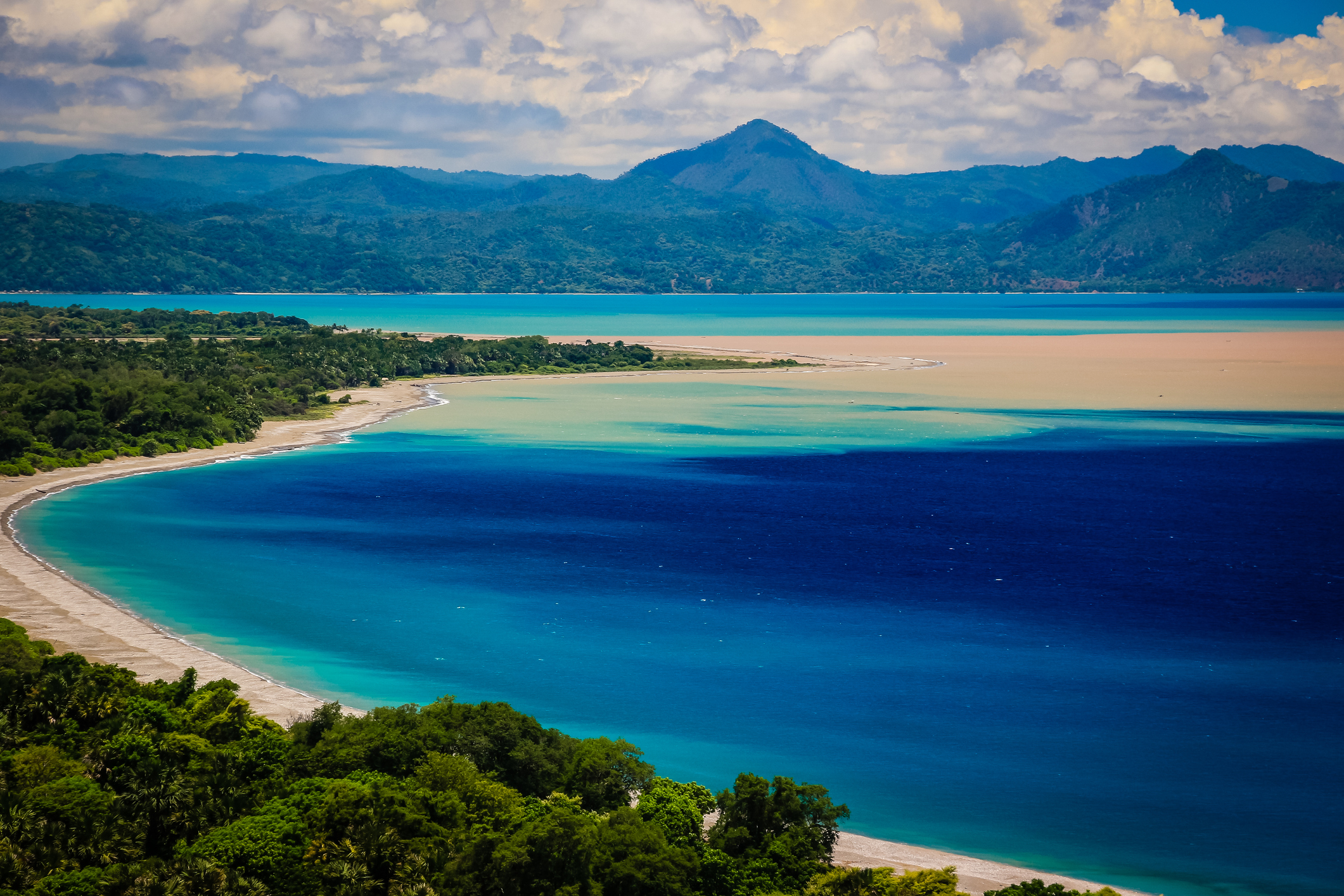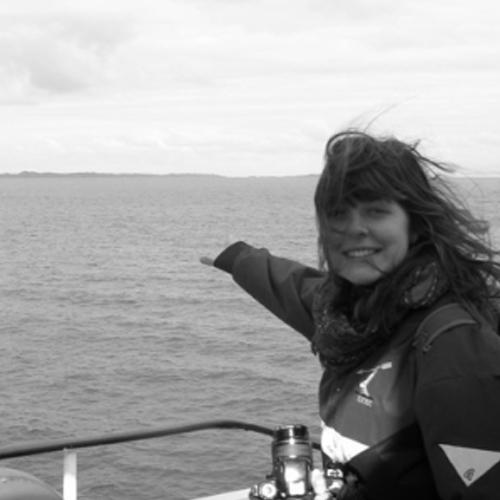Lost 'Atlantis' continent off Australia may have been home for half a million humans 70,000 years ago
Sonar mapping revealed signs of rivers and freshwater lakes across a now-sunken landscape almost twice the size of the UK, where humans could once have thrived.

About 70,000 years ago, a vast swathe of land that's now submerged off the coast of Australia could once have supported a population of half a million people. The undersea territory was so large it could have functioned as a stepping stone for migration from modern-day Indonesia to Australia, finds a new study published Dec. 15 in the journal Quaternary Science Reviews.
"We're talking about a landscape that's quite submerged, over 100 meters [330 feet] below sea level today," Kasih Norman, an archeologist at Griffith University in Queensland, Australia, and lead author on the new study, told Live Science. This Australian "Atlantis" comprised a large stretch of continental shelf that, when above sea level, would have connected the regions of Kimberley and Arnhem Land, which today are separated by a large ocean bay.
This ancient expanded Australian landmass once formed part of a palaeocontinent that connected modern-day Australia, New Guinea, and Tasmania into a single unit known as Sahul.

A habitable, populated landscape?
Despite its scale, until now there's been little research into whether humans could have inhabited the now-sunken shelf. "There's been an underlying assumption in Australia that our continental margins were probably unproductive and weren't really used by people, despite the fact that we have evidence from many parts of the world that people were definitely out on these continental shelves in the past," Norman said.
Related: Scientists finally discover 'lost continent' thought to have vanished without a trace
Her new study turns that assumption on its head. It brings regional data on sea levels between 70,000 and 9,000 years ago, together with detailed maps of seafloor features from the submerged continental shelf, provided by sonar mapping from ships. This combination painted a picture of dramatically changing conditions on that shelf over the studied period.
Firstly, the data showed that between 71,000 and 59,000 years ago, sea levels were roughly 130 feet (40 m) lower than they are today, a dip that exposed a curving necklace of islands at the Australian continent's outer northwestern edge. This archipelago lay within reaching distance, by voyaging boats, of the Southeast Asian island of Timor, which itself is not far from Indonesia.
Sign up for the Live Science daily newsletter now
Get the world’s most fascinating discoveries delivered straight to your inbox.
Then, between 29,000 and 14,000 years ago, there was another more precipitous dip in sea levels, coinciding with the peak of the last ice age. This was a time when large amounts of water became suspended in ice, which further lowered sea levels. These plummeting levels exposed a large swathe of continental shelf right beside modern-day Australia. "We're really looking at a landmass that was about 1.6 times the size of the UK," Norman said.
This, combined with the previously exposed ring of islands, "would have meant that there was basically a contiguous archipelago environment to move from the Indonesian archipelago, across to Sahul, and then from that archipelago into the supercontinent itself," Norman said. This could have enabled what she called a "staged migration" between modern-day Indonesia and Australia.
Meanwhile, the sonar mapping revealed a landscape where humans could well have thrived: a tall, sheltering escarpment, containing an inland sea adjacent to a large freshwater lake. There was also evidence of winding river beds carved across the land.
Norman calculated that the large shelf, with these life-supporting features, could have harbored anywhere between 50,000 and half a million people. "It's important to bear in mind these aren't real population numbers we're talking about, it's just a matter of projecting the carrying capacity of our landscape," she said. "We're basically saying it could have had that many people."

Retreat and migration
However, there are clues from other research that this once exposed plateau was indeed home to hundreds of thousands of people. Ironically, these come from a time when the potential inhabitants of this Atlantis would have been forced away by rising tides from their new found land.
As the last ice age began to taper off, melting ice caps shed water into a rising sea, Between roughly 14,000 and 14,500 years ago, sea level rose at an accelerating rate, going from about 3.2 feet (1m) per year to a meter [3.2 feet] over the course of 100 years, to 16 feet. "In this 400 year period, over 100,000 square kilometers of land go underwater," Norman said. Between 12,000 and 9,000 years ago, that pattern repeated, and another 100,000 square kilometers were swallowed up by the sea. "People would have really seen the landscape change in front of them, and been pushed back ahead of that encroaching coastline quite rapidly," Norman said.
This hypothesis is supported by other research. A recent study published in the journal Nature analyzed the genetics of people living in the Tiwi Islands, which sit on the edge of the shelf today. It revealed that at the end of the last glacial period, there was change in genetic signatures indicating an influx of new populations there. What's more, about 14,000 years ago, and then again between 12,000 and 9,000 years ago, the archaeological record at edge regions of modern-day Australia shows an increase in the deposit of stone tools — "which is normally interpreted to mean that there's a lot more people suddenly in that area," Norman said.
Around this time in Kimberly and Arnhem Land, cave art also changed to incorporate new styles and subjects, including more human figures in the mix. This may have been from new people arriving in the area, Norman said.
She hopes her research will motivate others to pay closer attention to the archeological importance of Australia's sunken continental shelf.
"It's quite fascinating to look at how people dynamically responded to events in the past and obviously survived them and thrived. I would hope that there might be something we can take from that, that we can apply to future climate change and sea level rise in the next few hundred years."

Emma Bryce is a London-based freelance journalist who writes primarily about the environment, conservation and climate change. She has written for The Guardian, Wired Magazine, TED Ed, Anthropocene, China Dialogue, and Yale e360 among others, and has masters degree in science, health, and environmental reporting from New York University. Emma has been awarded reporting grants from the European Journalism Centre, and in 2016 received an International Reporting Project fellowship to attend the COP22 climate conference in Morocco.









